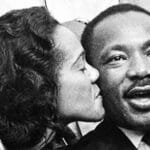Verna Garver: More Than Just a Name. You might recognize her as Clint Walker’s wife, but Verna Garver’s identity extends far beyond that connection. This is the story of a woman whose life, though largely unexposed to the cameras, was characterized by strength, family dedication, and quiet determination. We’ll explore her early life growing up in rural Illinois, the joys and challenges of family life in the mid-20th century, and the societal hurdles women faced during that era. While comprehensive details about her career are scarce, we will examine available information to paint a portrait of the remarkable woman she was. It’s a biographical narrative of resilience, enduring family bonds, and a life well-lived, even if it wasn’t always under the spotlight.
Who Was Verna Garver? Unveiling the Life of a Hollywood Spouse
Verna Garver—the name may not immediately resonate, but for those acquainted with Hollywood’s golden age, she is known as the wife of Clint Walker, the iconic star of Cheyenne. But Verna’s life encompassed much more than her role as a celebrity spouse. It was a story of quiet strength, unwavering family devotion, and a life lived largely away from the flashing cameras and red carpets. Let’s delve into the fascinating, yet often overlooked, life of this remarkable woman and try to discover her life’s most defining attributes.
A Simple Beginning in the Heartland: Early Life and Midwestern Roots
Born on April 16, 1927, in Anna, Illinois, Verna Lucille Garver spent her formative years in a close-knit community. Her parents, Jesse Albert Garver, a farmer, and Cuba Mabel St. John Garver, a homemaker, instilled in her the values of hard work and family. Verna was the youngest of three daughters, with older sisters Vera Luella Garver West and Virginia Lee Garver Wallace. A half-brother, Leonard Garver, also shared in their family life.
Anna, Illinois, in the 1930s was a world of one-room schoolhouses, church socials, and the daily realities of farm life. Though the Great Depression cast a shadow over the nation, the Garver family, like many in rural America, relied on their resourcefulness and strong community bonds to weather the economic storm. Verna likely attended the local school, where she would have studied reading, writing, and arithmetic alongside other children from nearby farms. Evenings might have been spent gathered around a radio, listening to news and entertainment, or playing games with her sisters.
Hollywood Romance and Family Life: Marriage to Clint Walker and Motherhood Journey
In 1948, Verna’s life took a dramatic turn when she married Clint Walker, a rising star on the precipice of Hollywood superstardom. At the time of their marriage, Verna was 21 and Clint was also 21, both standing at the threshold of a new life chapter. Their marriage resulted in a daughter, Valerie, born in 1950. Photos from this period depict a woman who exuded a quiet confidence, comfortably embracing her roles as wife and mother.
As Clint Walker’s career gained momentum with his role in Cheyenne, Verna’s life became intertwined with the glitz and glamour of Hollywood. While Clint navigated the world of movie sets and public appearances, Verna managed the home, raised Valerie, and provided a grounding presence amidst the whirlwind of fame. She likely attended premieres and social events, balancing her role as a supportive wife with her desire for a more private life.
A Life Beyond the Limelight and the Puzzle of the Missing Pieces: Exploring Unseen Aspects
One of the most striking aspects of Verna’s life is the relative lack of information about her professional endeavors. While some sources suggest she was primarily a homemaker, this doesn’t diminish her contributions in any way. It’s a common historical oversight—the considerable work of homemakers and mothers is often undervalued and under-documented.
However, census records offer a few clues. In the 1940 census, Verna is listed as working as a waitress, a job she likely held before her marriage. It’s possible that she continued to work in some capacity after marrying Clint, perhaps taking on part-time jobs that allowed her to balance work and family responsibilities.
Resilience, Strength, and the Unseen Challenges: Navigating Personal Traumas
Despite the limited information available, one fact remains clear throughout what little historical data is accessible: Verna possessed incredible resilience and quiet strength. When her marriage to Clint Walker ended in 1968, Verna showed incredible determination, raising her daughter, Valerie, and facing whatever life threw her way. She embodied the strength and fortitude of many women in the mid-20th century, navigating societal expectations with grace and determination—a testament to the untold struggles and triumphs of women who kept their families together.
The divorce undoubtedly presented significant challenges. As a single mother in the late 1960s, Verna faced both financial and emotional hurdles. She may have relied on support from family and friends as she navigated this new chapter in her life. Despite the difficulties, she remained committed to providing a stable and loving home for Valerie.
A Legacy of Quiet Strength and the Unsung Stories: Discovering Untold Legacies
Verna Garver passed away peacefully in Salt Lake City, Utah, on November 27, 2014, at the age of 87. Her story is a poignant reminder of the many lives lived outside the public eye, the countless women whose contributions often go unnoticed in history. While she didn’t seek the spotlight, her life was nonetheless remarkable and deserves recognition.
Through her daughter, Valerie, Verna’s legacy lives on. Valerie Walker went on to become one of the first female pilots for Delta Airlines, breaking barriers and inspiring future generations of women in aviation. Verna’s grandson, Cory Patton, also carries on her family’s story.
The Ongoing Search for More of Verna’s Story: A Call for Further Investigation and Recognition
The gaps in Verna Garver’s documented history are a powerful reminder of how much remains untold about the lives of women in the mid-20th century. Further investigation into her life is crucial not simply for historical completeness, but to paint a more accurate picture of the complexities and quiet strength of women who shaped the American nation during a transformative era of social and cultural change. Oral histories from family members and friends, along with in-depth archival research, could help uncover her passions, beliefs, and unseen contributions.
Researchers might explore local historical societies in Anna, Illinois, and Salt Lake City, Utah, for additional information about Verna’s life. Census records, newspaper articles, and family documents could provide valuable insights.
What was Verna Garver’s career before and during her marriage to Clint Walker? Challenging Notions of Employment
Here are a few key observations about Verna Garver’s life and the need for further research:
- Verna Garver’s life remains largely a mystery, a testament to her preference for privacy.
- Available information paints a picture of dedication to family and home.
- This question remains largely unanswered due to limited documentation; this is “What was Verna Garver’s career before and during her marriage to Clint Walker?“
- Her story exemplifies the often-unseen contributions of spouses to public figures.
- Verna’s life offers a glimpse into the challenges faced by women navigating societal expectations in mid-20th century America, specifically with domesticity.
A Life in the Shadows: Understanding the Importance of Privacy
Verna Garver, born April 16, 1927, lived a life largely hidden from the public eye. She’s best known as the wife of Clint Walker, the iconic star of the television series Cheyenne. But who was Verna Garver beyond her famous husband? What defined her individual aspirations and contributions? With so little data, reconstructing her life is an intellectual endeavor.
We know she married Clint Walker in 1948. Their union produced a daughter, Valerie, in 1950. Yet, details about Verna’s life before and during this marriage remain elusive. This lack of information isn’t necessarily unusual for women of her generation, where a wife’s role was often centered around the home. Did she have aspirations beyond being a wife and mother? We can only speculate about her possible entrepreneurial dreams.
The Homemaker’s Role: Recognizing the Undervalued Contributions to Domestic Life
During her marriage, Verna was primarily a homemaker. This wasn’t a choice made in isolation; it reflected the societal norms of the time. Many women of that era prioritized family life and domestic responsibilities, often foregoing independent careers. Was this Verna’s sole ambition? We don’t have definitive answers. The available evidence suggests she found fulfillment in this role, choosing to support her husband’s soaring Hollywood career. Despite the lack of her professional history, society often undermines the importance of domesticity for women of the time.
But did she have hidden talents, unfulfilled dreams? This is a question that fuels curiosity and underscores the limitations of the historical record. The scarcity of information invites us to consider the unspoken stories of countless women who dedicated their lives to family, often at the expense of professional recognition. Their domestic contributions deserve consideration, even if they are incomplete.
Beyond the Marriage: Understanding a Life of Autonomy
Verna and Clint divorced in 1968. After their separation, she retreated













